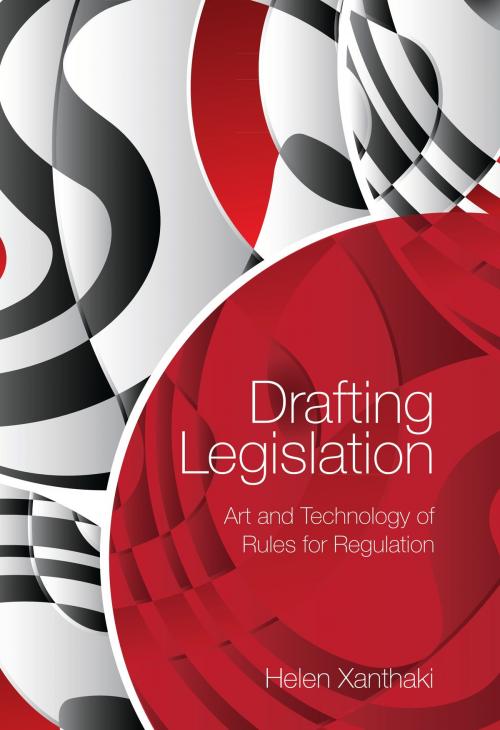Drafting Legislation
Art and Technology of Rules for Regulation
Nonfiction, Reference & Language, Law, Annotations & Citations| Author: | Professor Helen Xanthaki | ISBN: | 9781782255086 |
| Publisher: | Bloomsbury Publishing | Publication: | October 16, 2014 |
| Imprint: | Hart Publishing | Language: | English |
| Author: | Professor Helen Xanthaki |
| ISBN: | 9781782255086 |
| Publisher: | Bloomsbury Publishing |
| Publication: | October 16, 2014 |
| Imprint: | Hart Publishing |
| Language: | English |
This book constitutes the first thorough academic analysis of legislative drafting. By placing the study of legislation and its principles within the paradigm of Flyvberg's phronetic social sciences, it offers a novel approach which breaks the tradition of unimaginative past descriptive reiterations of drafting conventions. Instead of prescribing rules for legislation, it sets out to identify efficacy as the main aim of the actors in the policy, legislative and drafting processes, and effectiveness as the main goal in the drafting of legislation. Through the prism of effectiveness as synonymous with legislative quality, the book explores the stages of the drafting process; guides the reader through structure and sections in their logical sequence, and introduces rules for drafting preliminary, substantive and final provisions. Special provisions, comparative legislative drafting and training for drafters complete this thorough analysis of the drafting of legislation as a tool for regulation. Instead of teaching the reader which drafting rules prevail, the book explores the reasons why drafting rules have come about, thus encouraging readers to understand what goal is served by each rule and how each rule applies. The book is aimed at academics and practitioners who draft or use statutory law in the common or civil law traditions.
This book constitutes the first thorough academic analysis of legislative drafting. By placing the study of legislation and its principles within the paradigm of Flyvberg's phronetic social sciences, it offers a novel approach which breaks the tradition of unimaginative past descriptive reiterations of drafting conventions. Instead of prescribing rules for legislation, it sets out to identify efficacy as the main aim of the actors in the policy, legislative and drafting processes, and effectiveness as the main goal in the drafting of legislation. Through the prism of effectiveness as synonymous with legislative quality, the book explores the stages of the drafting process; guides the reader through structure and sections in their logical sequence, and introduces rules for drafting preliminary, substantive and final provisions. Special provisions, comparative legislative drafting and training for drafters complete this thorough analysis of the drafting of legislation as a tool for regulation. Instead of teaching the reader which drafting rules prevail, the book explores the reasons why drafting rules have come about, thus encouraging readers to understand what goal is served by each rule and how each rule applies. The book is aimed at academics and practitioners who draft or use statutory law in the common or civil law traditions.















